In this issue which coincides with International Women's Day are tucked stray but delightful stories of grit, imagination, pioneering and bloody hard work. For starters, meet 5 women role models who want you to meet their role models.
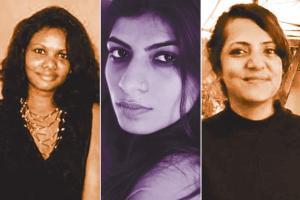
Ruby Hembrom, Shreya Ila Anasuya, Lara Jesani
'Don't see the disabled with pity, sympathy or as heroic or inspirational'
ADVERTISEMENT

Shreya Ila Anasuya, 30
Managing editor of digital magazine Skin Stories
I have been writing since I was young. But, it was in my late teens that I started to work in human rights, particularly in gender and sexuality. Like many other people, I hadn't thought about disability as an issue per se, because it's not something that is part of public discourse in a way that gender has now become.
Though I had experienced chronic illness, and lived with a psychosocial disability, I only started to actively think and learn about it while editing the blog of the Sexuality and Disability at Point of View Mumbai in 2016.
The impulse behind the blog was to have voices of people with disabilities prominently featured and amplified. Also, there was a particular intersection we were looking at. There is a huge amount of stigma around the idea of people with disabilities as sexual and romantic beings. We wanted to address that taboo, and to break some myths apart, by telling the stories of real people with disabilities, and bringing to the fore their experiences, desires and frustrations. We began by commissioning stories to people with disabilities, along with some reportage. After the blog started doing well, we understood the need to give it its own identity, and a year later, we re-launched as a digital publication called Skin Stories, recently published as a book.
Language is central to what we do. In fact, I built a style-guide from scratch. Society tends to look at people with disabilities from two lenses: first, from the lens of pity or sympathy, and that's where a lot of derision comes from; and second, as being heroic or inspirational. That's also insulting, because you are essentially freezing this person into a frame that is comfortable to you. Our editorial policy is that we use person-first language and don't shy away from the vocabulary of disability. We also do not agree with the use of the word "divyang". We think it is condescending and is a way of stereotyping people with disability. It's absolutely crucial to use sensitive language, because ableist slurs invalidate the humanity and experiences of this very diverse group of people.
Having worked on Skin Stories, I have started to understand the ways in which misogyny and ableism play out in relation to each other in the lives of women and queer folks with disabilities. Most importantly, I learned how diverse disability it is, which is why we can't homogenise the experience.
Antara Telang supports Shreya Ila Anasuya
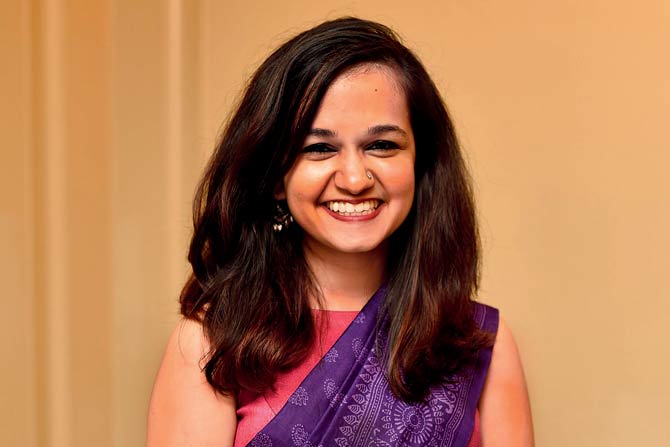
Telang is a communications specialist, writer and illustrator, who addresses gender and disability in her work
'On March 8, one is often tempted to put the perfect female figure on a pedestal: the sacrificing mother, caring daughter, beautiful wife. Subsequently, those who do not belong to upper caste, cisgender, or non-disabled communities are either treated as the ultimate inspiration or an entity to feel sorry for. We need people like Anasuya, who let women, gender nonconforming folks, and people with disabilities take centre stage to own their narrative'
As told to Jane Borges
'Got hostel curfews relaxed in Delhi'
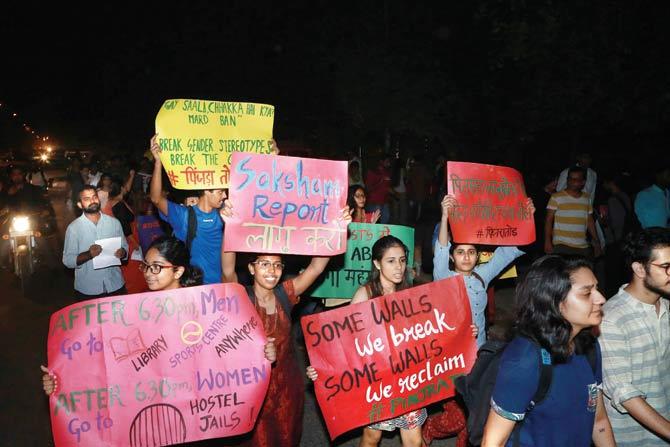 A A night march by Pinjra Tod in the North Campus area of Delhi University on September 23, 2016. Pic/Getty Images
A A night march by Pinjra Tod in the North Campus area of Delhi University on September 23, 2016. Pic/Getty Images
Natasha Narwal,31
Member of Pinjra Tod and research scholar
The movement began in 2015 when the Jamia administration issued a notice cutting down the number of 'late nights' for female students. This regressive notice prompted the Delhi Commission for Women (DCW) to take suo motu cognisance of the matter and ask the administration to explain itself. Female students across Delhi campuses used this plank to collectivise for the sake of demanding better, equal rights for themselves. We wanted to challenge the institutional patriarchy in universities and the logic of false security by caging women. A jan sunwai (people's hearing) was held at Jantar Mantar where about 500 gathered and spoke about our grievances and experiences as women students.
A petition was sent to the DCW along with students' signatures and a report enumerating all the complaints that were gathered. That is how Pinjra Tod began, and its scope expanded beyond advocating for secure, affordable and non-discriminatory hostels, to also talking about sexual harassment in academia and the need for democratic ICCs, moral policing, access to public transport, fees hikes, privatisation of education etc. Ultimately, we are concerned with fighting attempts to control women's sexuality as a means of maintaining structural status quo. Restrictions in university spaces are a mere manifestation of problems in the larger society, where caste, class and patriarchy interact with each other to form rigid, inaccessible barriers for female students.
We have been holding protests to push for our demands and to build pressure from the ground. We have found strength in and as a collective, instead of solely relying on state bodies to intervene. With Pinjra Tod, what started as a loose, leaderless collective, has now evolved into a more structured, three-tier organisation. There are college-level teams, a coordinators' body, and a body above it which focuses on executing the mandate of the coordinators body in a more structured manner, like allocating responsibilities, calling for meetings etc.
We have created an impact on multiple levels. In various colleges, such as Miranda House and Panjab University, the curfews imposed on female students have been relaxed. There are collectives of women across colleges and universities now and these collectives raise several issues besides their own, because we are not in an isolated struggle. Currently, many of our team members are involved in relief efforts and fact-finding and peace teams, which are helping the victims of the violence that ensued in Delhi. That being said, every policy and decision has a gendered impact and we as women, need to organise, to better assert ourselves and break free from all oppressions.
Kavita Krishnan supports Pinjra Tod
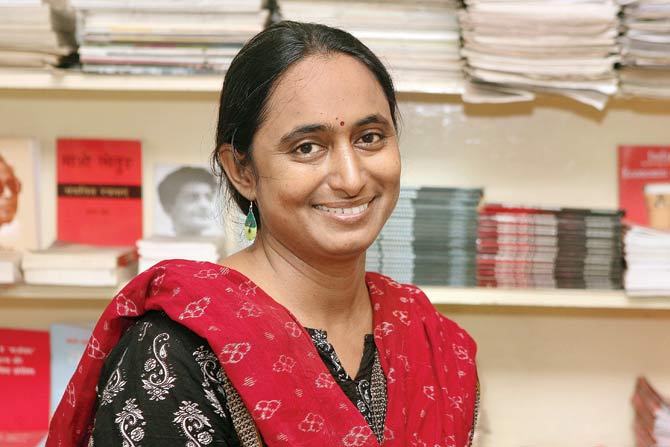
Krishnan is the secretary of the All India Progressive Women's Association and a member of CPI-ML
'Pinjra Tod makes the important point that restrictions on women's freedom and mobility does not promote safety, but is in fact a form of discrimination and even violence'
As told to P Vatsalya
'The plan is to encourage more transgenders to study'
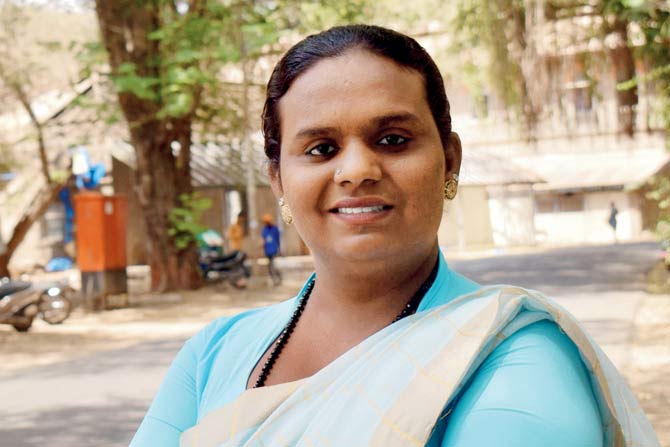
Sarang Punekar, 25
First transgender student to study at Savitribai Phule Pune University
My journey to becoming a student at the Savitribai Phule Pune University (SPPU) is a long one. Originally from Parbhani—the fourth largest city in the Marathwada region—I moved to Pune in 2013. Two years later, after I finished my bachelor of business administration (BBA), I became part of the local transgender community.
For at least a year, I worked at the billing department of a multi-national hospital in Pune itself. But, things were never easy. I faced a lot of harassment and was never accepted by others. So, after a year of enduring immense torture, I left the job. With no other choice, I actively joined the local transgenders, who would make me dance at weddings and other functions in the city.
But, within six months I realised I was wasting my talent and time there. I told myself, I shouldn't do this. So, around 2017, a friend from IIT-Delhi put me in touch with Dr Anagha Tambe at the Pune varsity. I told her I wanted to study something so that the future generation of the transgender community is benefitted. I wanted them to not face the problems I had all this while.
Before deciding on this, I started going to the Women's Studies Centre in Ambedkar Bhavan of SPPU for two months. And everything felt lai bhaari (very nice). They used to see all issues from all kinds of lenses. So, a decision was made. I would be doing masters in gender, culture and development. Not once did I face any discrimination on campus, in fact, this phase has been extremely motivating.
Now that the course is almost nearing its end, I am also preparing for the International English Language Testing System (IELTS). The plan is to get into academics so more and more transgender students are encouraged to take to books. I might teach sociology or work at any other Women's Studies Centre across the country.
There is another plan. While I don't discourage the work MLA Supriya Sule has done in writing policies for our community, I do feel transgenders need someone from among them to lead them in the future. I believe only someone who has gone through our pain can understand what policies need to be introduced so that the transperson begging on the street can hope for a better future. So yes, I will never leave activism and will continue to fight for the rights of people from our community.
Disha Pinky Shaikh supports Sarang Punekar
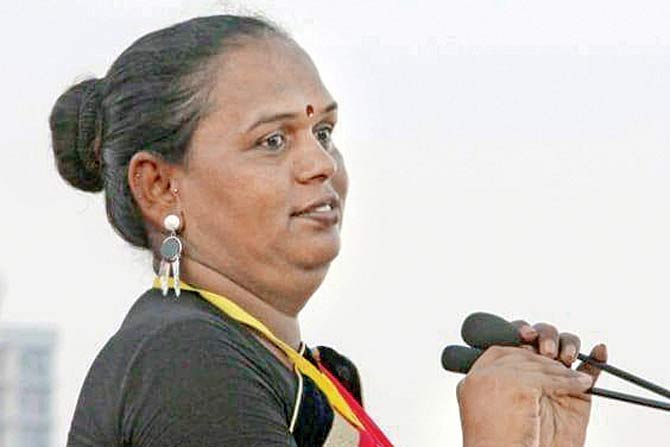
Shaikh is the first transgender person to be appointed as state spokesperson of Vanchit Bahujan Aghadi in 2019
'I want more people to know about Punekar, and how at such a young age, she is striving to encourage others from the community to take education seriously'
As told to Prutha Bhosle
'Women's participation has changed perception of the protests'

Lara Jesani, 35
Independent litigator, has been helping Mumbai's anti-CAA protesters fight legal battles
I've been a lawyer for over a decade, but in the last two and a half years, I've gravitated towards volunteering in human rights. I mainly take up issues related to civil liberties and democratic rights, especially to do with freedom of speech and expression, and freedom of assembly, and right to protest. As part of a litigation advocacy over CAA, NRC and NPR, I have been part of the opposition on the grounds that it is unconstitutional. We recently filed a petition against it in the Supreme Court, which is being heard.
In the protests that took place in Mumbai, the police were initially cooperative and giving permissions. But, in the last two months, the cooperation has decreased and there have been arbitrary arrests and FIRs, even when it came to candlelight vigils that were held to condemn the violence in Delhi. I've myself been charged in two FIRs. The first one was during the Gateway protests, which took place on January 5, which was a spontaneous gathering that wasn't organised by anybody in particular. It came up on social media and people landed there. When people were detained, senior advocate Mihir Desai and I had gone to get them released. In the second instance, I wasn't even present at the Hutatma Chowk protests, but my name was in the FIR. They had just picked up the same names from the last protest and named them in the FIR.
The protests have been historical for Mumbai. We have always hailed the 'spirit of Mumbai', which is moving on and bouncing back, but if you ask me, the real spirit of Mumbai has emerged now. We, as a city, take our freedom seriously, and when such draconian legislations are passed, the community gets enraged. The rise of women's participation in protests has also been phenomenal. The entire process is women-led and that has changed the perception of the protests. It's easier to target and criminalise Muslim men and we've seen that in the case of lynching, Romeo squads and love jihad and other hate crimes. But with the women coming out, it's very difficult for the government to ignore this wave. These women are speaking the constitutional language and it's not something you can brush aside.
Having said that, it's been tough for human rights lawyers because of the attack on policies and laws that were in favour of social legislation and welfare. For instance, Section 332 of the IPC has been brought in specifically to target journalists and protesters because they are the ones to confront the police.
The second challenge is the institutions itself. For example, if there's a judge who has passed anti-state judgment or criticised the state, they are not elevated even if the collegium recommends it. Then they also transfer judges. This is a way of controlling the judiciary and, therefore, the judges do not want to pass any radical judgment or in favour of people when are they fighting against the state. They know they will be penalised. It's a chilling effect.
Sameera Khan supports Lara Jesani
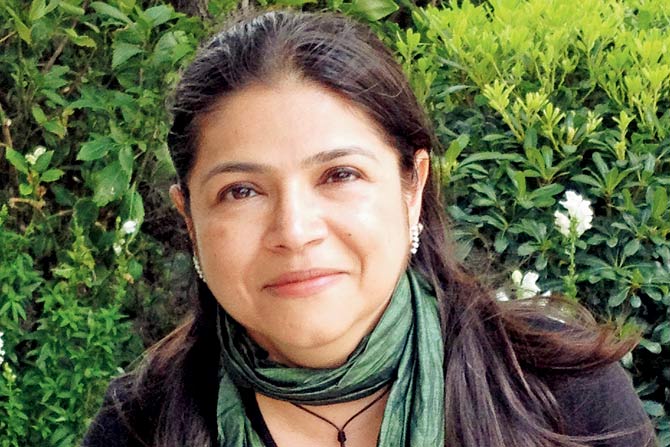
Khan is the co-author of Why Loiter? Women and Risk on Mumbai Street
'Advocate Lara Jesani has been doing phenomenal work in the sphere of human rights. She is the one I would call if I am getting arrested at a protest march'
As told to Anju Maskeri
'Adivasi writing on other issues is not welcome'
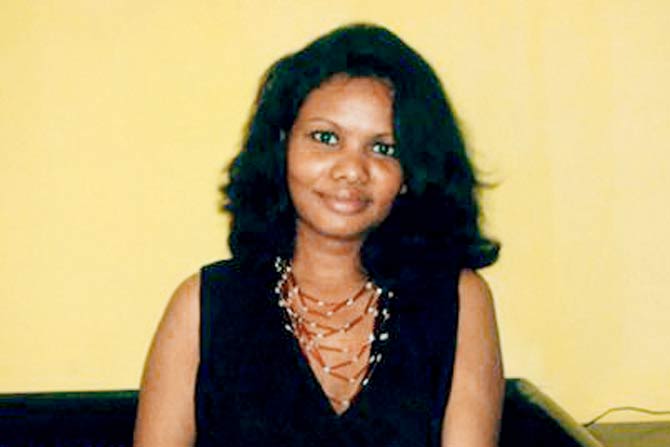
Ruby Hembrom, 41
Runs Adivaani, a publishing house that focuses on stories of India's tribals
While I graduated in law, it was during my course that I realised we needed connections and recommendations to intern, and that was something my family social setting couldn't provide and thus, after graduating I worked in unrelated sectors such as the banking industry and customer's service, and my jobs often took me to Delhi or Gurugram. However, every place I entered, be it college or work, I found myself to be the only adivasi. While there were some in college—from North Bengal and Sikkim, there was no one from peninsular India or the Chottanagpur region like myself—in school this was absent.
I kept wondering why this was happening and didn't know what to make of it. Later, while working at IBM in Delhi, again it struck me that even at entry-level jobs there were no other adivasis. Is it that the companies don't go to those areas to hire, or is it that they go there, but don't find someone eligible?
I realised it was possibly the latter. And, the fact that I went to an English language school, had opened more doors for me. In 2009, I quit my job and went back to Kolkata and thought about how to take the language to my people in Jharkhand. Meanwhile, I started working with NGOs in the city and worked with tribals in the tea gardens—both Santhals and other adivasi communities.
Around this time, my sister spotted a four-month publishing course and suggested that I take it up. That was 2012. During the course, we were introduced to the who's who of the publishing industry: authors, poets, printers, academicians and publishers. We met publishers who printed exclusively, writing for Dalits and women, and I found it interesting that there was a special space for certain kinds of articulation, but, there was not one adivasi name and that became the tipping point of what I wanted to do. And I wanted to do it in English, because that would get the writing noted.
When I went to the communities, the adivasis said "we have no stories". So, I had to tell them that their life stories are worth capturing—that these books would reflect the very rich culture of storytelling that they had and that I need to take them back and make them relevant. The effort moved from being a platform to write and became one for articulation to reassert identity.
Since the launch of Adivaani, there has been some attention given to us and the cause, but has it been mere tokenism or more? I am invited to literature festivals only, and only, to participate in panels on literature of the marginalised communities. It's like an adivasi cannot have an opinion of anything else. Adivasi writing on anything apart from their reality is not welcome and that's unfair. Are we not allowed to have opinions on politics?
I still have not been able to scale up. It's not been an easy journey and in fact, I haven't published any new work in two years.
People say, crowd-source funds. But I have tried it twice already and failed. And, here's why: the people I know on social media are young adivasis, they are first generation educated, and poor. What can they give me? I need someone who has a different social circle to actually front this.
Divya Kandukuri supports Ruby Hembrom
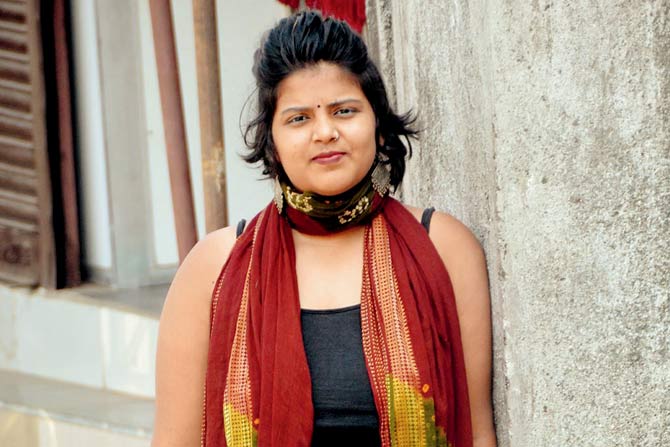
Kandukuri is a journalist and writes on caste politics
'Ruby is doing amazing, real work for years now, telling histories that have been erased and ignored by an upper caste and Brahmanical media'
As told to Gitanjali Chandrasekharan
Catch up on all the latest Mumbai news, crime news, current affairs, and also a complete guide on Mumbai from food to things to do and events across the city here. Also download the new mid-day Android and iOS apps to get latest updates
 Subscribe today by clicking the link and stay updated with the latest news!" Click here!
Subscribe today by clicking the link and stay updated with the latest news!" Click here!






